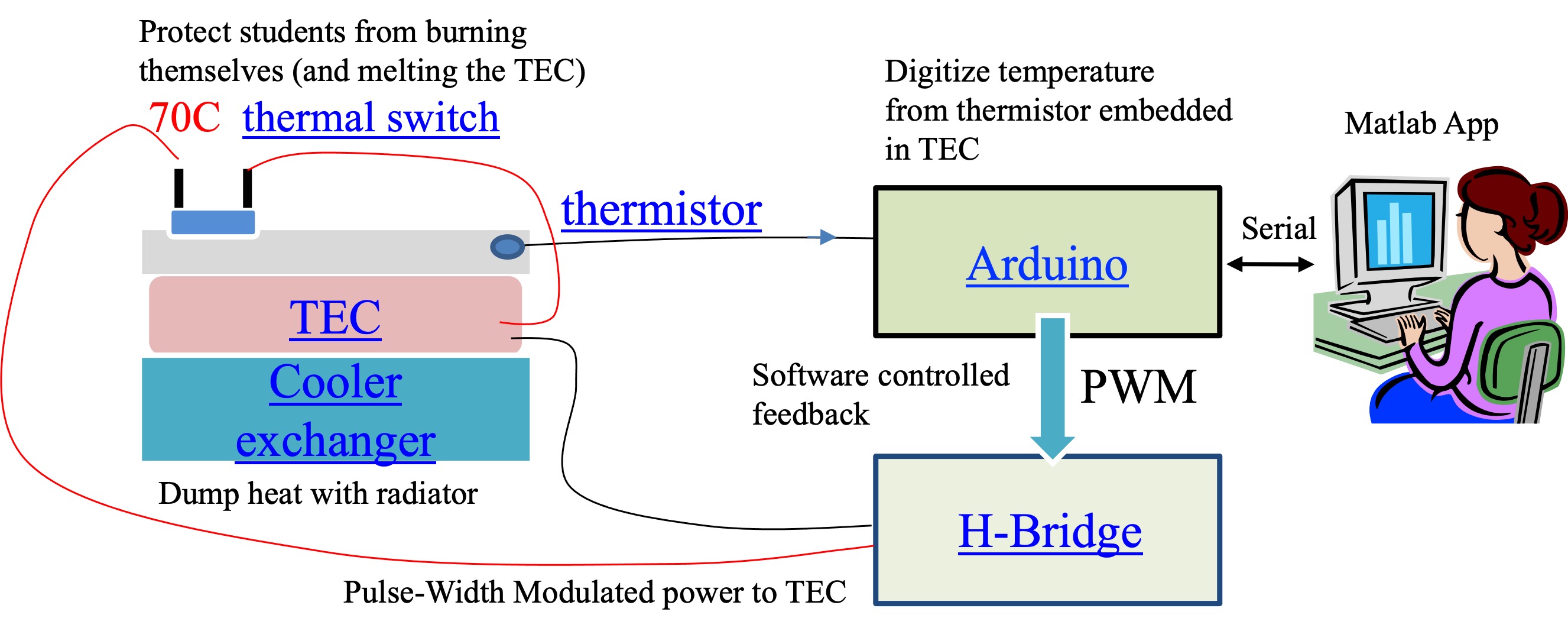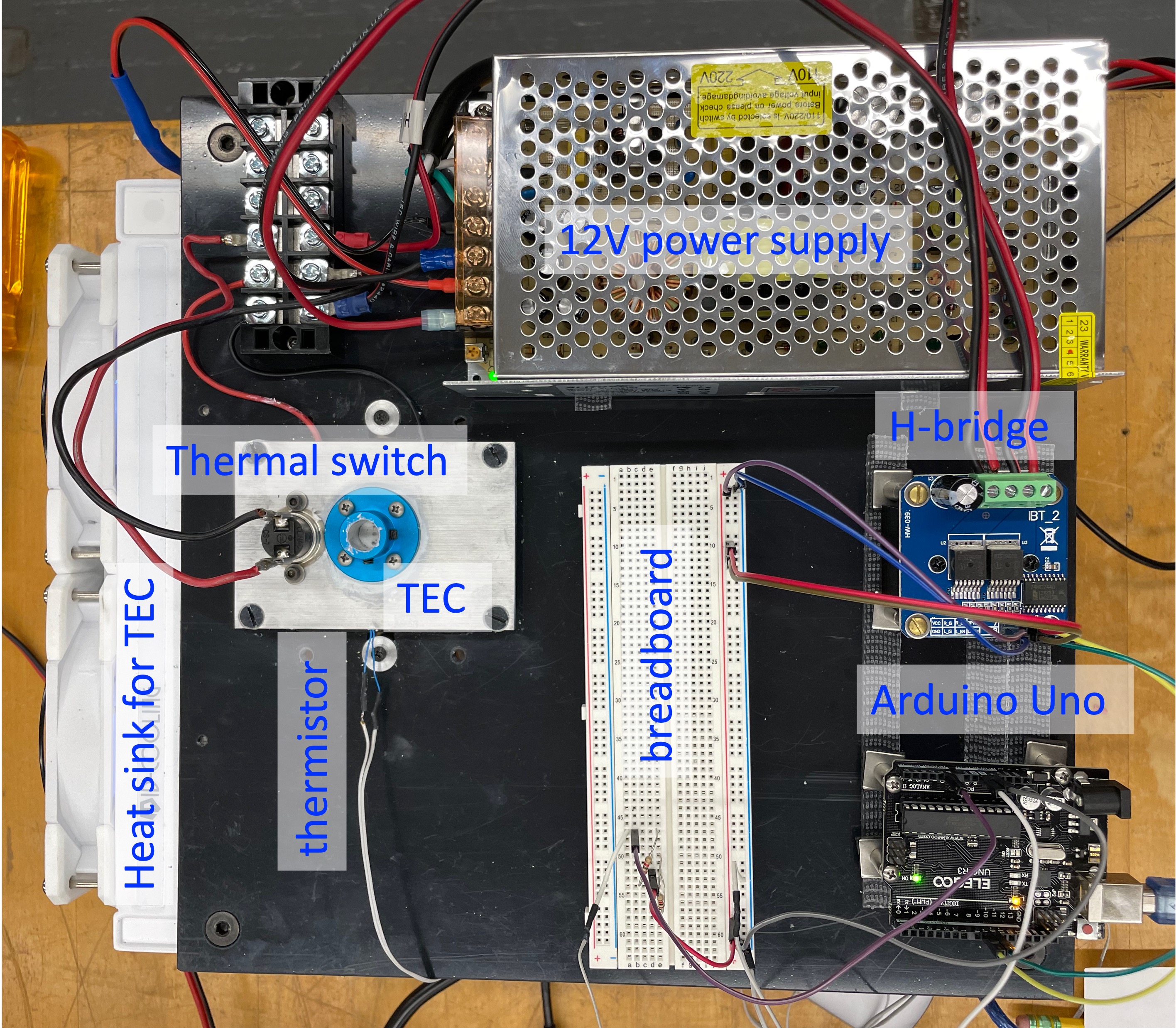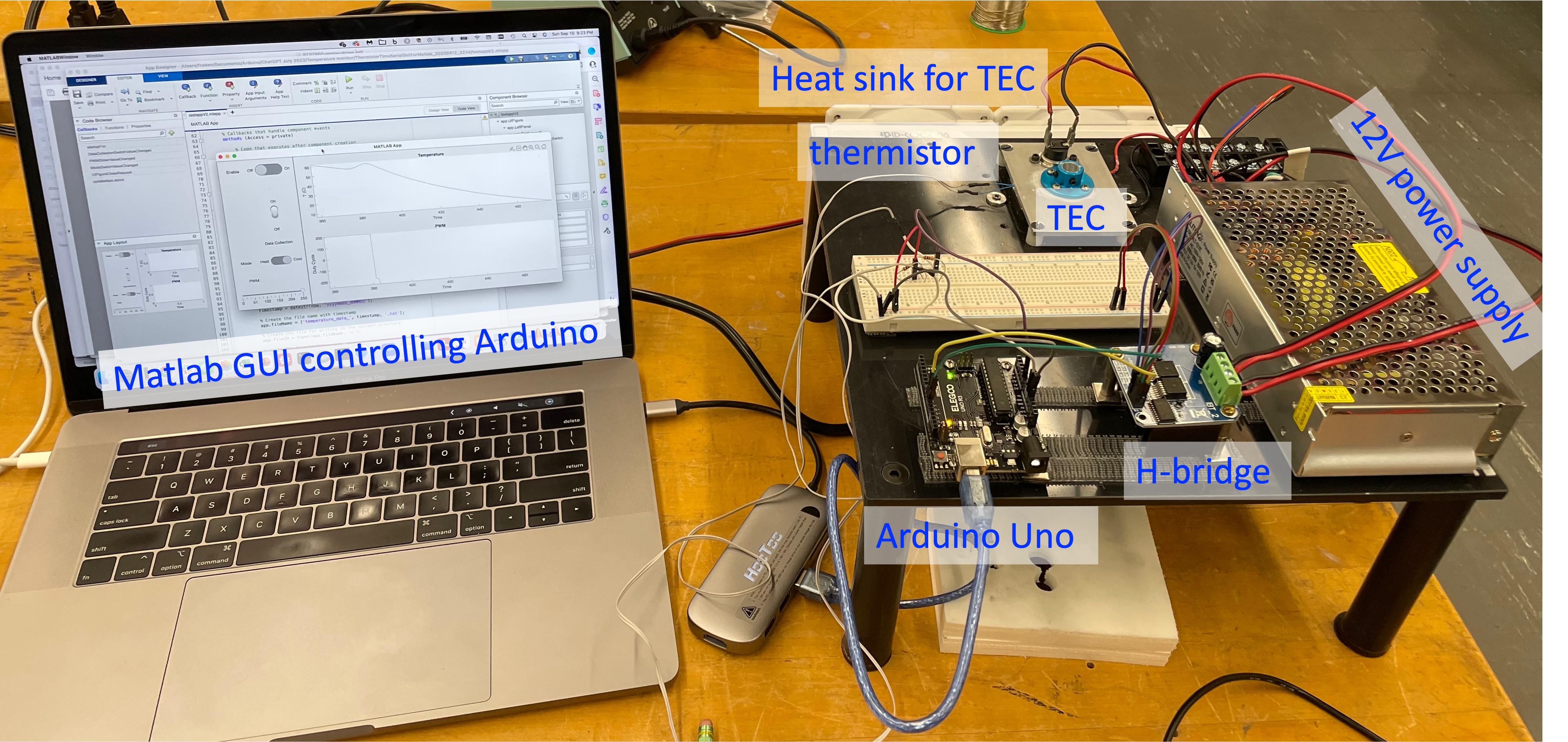





Thermistor data sheet. Wiki (as always) tells you useful stuff. See the B-parameter equation explanation to make sense of the data sheet. For example, the Epcos B57861S0202F040 R/T No. 1008 has R_0 = 2000 Ohm at T_0 = 298.15 K and B = 3560 K. Using the Wiki B-parameter equation and the data from the data sheet, you can calculate the temperature from measuring the resistance. The thermistor generates heat itself. We use a voltage divider with 5V maximum. Which termistor generates more heat? One with R_0 = 2000 Ohm or one with R_0 = 100,000 Ohm? Pick a thermistor that generates the least amount of heat.
Arduino UNO pinout.
The guts of the experiment is the thermoelectric cooler (TEC).

Again, call on Wiki and study the Peltier - Seebeck effect. An introduction to practical TECs is provided by Tellurex, a TEC manufacturer.
You can model the heat power (watts) flowing across a TEC with the following equation. See p. 47 in the Melcor document.
![]()
where Sm, Rm, and Km are the Seebeck coefficient, electrical resistance, and thermal conductance of the TEC. Th and Tc are the temperatures in Kelvin on the hot and cold sides of the TEC and the electrical current is I in amps. In this equation, the first term accounts for heat moved by the peltier effect, the second term for joule heat that results from input electrical current, and the third for conduction due to the temperature difference across the device. To account for heat storage within the thermoelectric, it is modeled as a block of ceramic.
Seebeck Coefficient: Sm =0.024 [V / K].
Electrical Resistance: Rm = 1.5 [ohms]
Thermal Conductance: Km = 0.5 [W/m/K]
Laird TEC performance curves (used in our set-ups)
Heat exchanger. "Dashflow" CPU water cooler.

Pulse Width Modulation is the method of supplying power to the TEC.